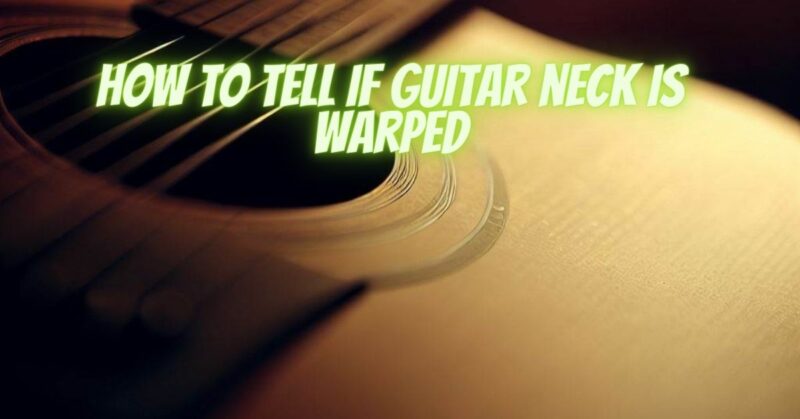A warped guitar neck can significantly impact playability and intonation, leading to frustration for guitarists. Recognizing the signs of a warped neck is crucial for addressing the issue promptly and ensuring optimal performance. In this article, we will explore common indicators of a warped guitar neck and discuss potential solutions to rectify the problem.
- Visual Inspection: Inspect the guitar neck visually to identify any visible signs of warping. Look down the neck from the headstock towards the body, observing for any noticeable curvature or twists. A straight and evenly aligned neck is desirable, while a warped neck may exhibit a concave (backbow) or convex (upbow) shape.
- Fret Buzz and Inconsistent Action: A warped neck often results in issues with the guitar’s action and playability. Fret buzz, where the strings make unwanted contact with the frets, is a common symptom. The buzz may occur at different points along the neck, especially in the middle or higher frets. Inconsistent action, where some areas of the neck have higher or lower string height than others, can also indicate a warped neck.
- Intonation Problems: A warped neck can cause intonation problems, leading to notes sounding out of tune when played higher up the neck. If the guitar’s intonation consistently sounds off, even after adjusting the saddle position, it may be a result of neck warping affecting the scale length and string tension.
- String Alignment and Gap: Examine the alignment of the strings relative to the fingerboard and frets. On a properly set-up guitar, the strings should run parallel to the edges of the fingerboard, with consistent spacing between the strings and the frets. A warped neck may cause the strings to deviate from this parallel alignment or create uneven gaps between the strings and frets.
- Neck Relief and Truss Rod Adjustment: Check the neck relief to determine if it is contributing to the perceived warping. Press down the low E string at the first and last frets simultaneously and observe the gap between the bottom of the string and the top of the frets around the middle of the neck. Excessive backbow (concave shape) or upbow (convex shape) can indicate a need for truss rod adjustment to correct the neck relief and address the warping.
- Seeking Professional Assessment: If you are unsure about the presence of a warped neck or how to address it, it is advisable to seek the assistance of a professional guitar technician. They have the expertise and tools to accurately diagnose and rectify neck issues. They can evaluate the neck’s condition, make precise truss rod adjustments if necessary, and advise on any additional repairs or adjustments needed.
Conclusion:
Recognizing the signs of a warped guitar neck is essential for maintaining optimal playability and intonation. Visual inspection, noting fret buzz and inconsistent action, intonation problems, string alignment and gap, and evaluating neck relief are key indicators of neck warping. Seeking professional assessment from a guitar technician is recommended for an accurate diagnosis and appropriate corrective measures. Addressing a warped neck promptly will help ensure a more enjoyable playing experience and maintain the guitar’s performance at its best.


